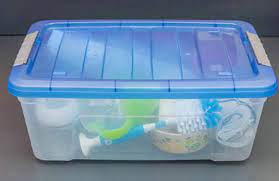Cleaning Feeding Items: Essential Practices for Your Baby’s Safety
Cleaning baby’s feeding items is essential for the health and safety of your little one. It is important to thoroughly clean and sanitize all of your baby’s feeding supplies, including bottles, nipples, spoons, bowls, and any other utensils used for feeding. This helps prevent the spread of germs and bacteria, as well as ensuring that your baby is receiving safe, clean nutrition. It is also important to follow the manufacturer’s instructions for cleaning and sanitizing your baby’s feeding items to ensure that they are properly cared for. With proper cleaning and sanitizing, you can rest assured that your baby is receiving safe, clean nutrition. Please keep reading for details on the following topics:
Handwashing baby’s feeding items
Sterilizing feeding items

HOW TO HANDWASH A BABY’S FEEDING ITEMS
Ensure that the hands are washed and dried
Uncover the bottle and separate the parts
Hold the parts under running water to rinse
Then place the items into a basin of clean water
Add soap and begin scrubbing the items
Rinse the items under running water
Place the clean items on top a clean towel to air dry
Then stored in a clean container designated only for baby items
Clean the washing container and brush thoroughly and allow to air dry
HOW TO STERILIZE INFANT’S FEEDING ITEMS BY BOILING
Ensure that all feeding items have been washed
Place the items in a pot of water
Then put to boil for about 5 minutes
Use forceps to remove the items from the hot water
Then place the items on top a clean towel to air dry
Put the parts together
Then store in a safe place
Wash and dry the hands
HOW TO USE BLEACH TO STERILIZE INFANT’S FEEDING ITEMS

Will require unscented bleach and clean water
Add 2 teaspoons of bleach to 16 cups of water into a clean container
Add all the items to the container
Allow the items to soak for about 2 minutes
Use clean forceps to remove the items from the container
Place the items on a clean towel to air dry
It is not necessary to rinse the items after removing from the container
Put the parts together
Then store in a safe place
PRECAUTIONS WITH STERILIZING SOULTIONS
- Allow the items to remain in the solution for about a half hour
- The solution must be changed every 24 hours
- Read Instructions Carefully: Always follow the manufacturer’s instructions regarding the concentration, dilution, and soaking time to ensure the solution is effective and safe.
- Dilute Properly: Use the correct ratio of solution to water as specified by the product label. Over-dilution may reduce effectiveness, while overly concentrated solutions can be harmful.
- Wear Protective Gear: Avoid direct contact with the solution. Use gloves when handling sterilizing solutions to protect your skin, especially if the solution contains strong chemicals like bleach or hydrogen peroxide.
- Ventilate the Area: Use sterilizing solutions in a well-ventilated area to prevent inhalation of fumes, which may cause respiratory irritation or harm.
- Avoid Mixing Chemicals: Do not mix sterilizing solutions with other cleaning agents (e.g., bleach with ammonia) as this can create toxic gases.
- Keep Out of Reach of Children: Store sterilizing solutions securely and away from children and pets to prevent accidental ingestion or contact.
Disclaimer: The information provided in this content is for general informational purposes only. It is not intended as medical or healthcare advice, diagnosis, or treatment. Always seek the advice of a qualified healthcare professional with any questions you may have regarding a medical condition or healthcare decisions.

